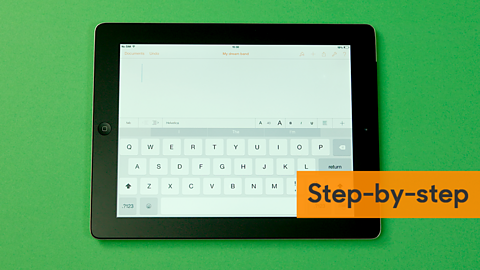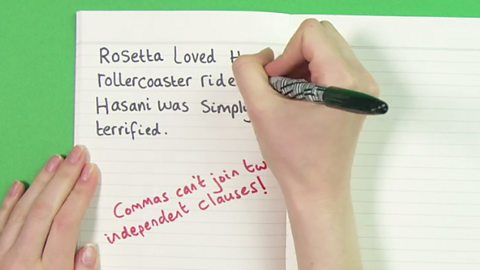Semicolons can be used to separate parts of a sentence.
They can also separate two main clauses or grouped items in a list.
Semicolons can also help to simplify lists by showing which items are grouped together.
Find out how to use semicolons to list the members of a band
Have a go

Image caption, Click to see a step-by-step slideshow.
1 of 7
When would you use semicolons in a list?
Writing a list sounds simple, but there are several punctuation marks you need.
Colons can introduce a list, while commas are used to separate items in a list. For example:
You will need to bring the following: sleeping bag, pillow, pyjamas, water bottle, waterproof jacket, sweatshirt, walking boots, and swimming kit.
But what if the list included explanations or extra detail about the items? Where the list items themselves already use commas, things can get complicated. That's where the semicolon can be useful.
Examples
Look at the following example:
You will need to bring the following: sleeping bag, pillow, and pyjamas for the overnight stay; water bottle, waterproof jacket, sweatshirt, and walking boots for the afternoon trek; and a swimming kit for the river activities.
Here, a colon introduces the list and semicolons indicate which parts of the list are grouped together.
Here's another example:
Last year we travelled to Dorchester, Dorset; Edinburgh, Scotland; and Whitby, North Yorkshire.
In this example, commas help to separate town names from more general locations, and semicolons show which of the place names and locations are grouped together.
Activity - semicolons
More on Punctuation
Find out more by working through a topic
- count3 of 3

- count1 of 3
